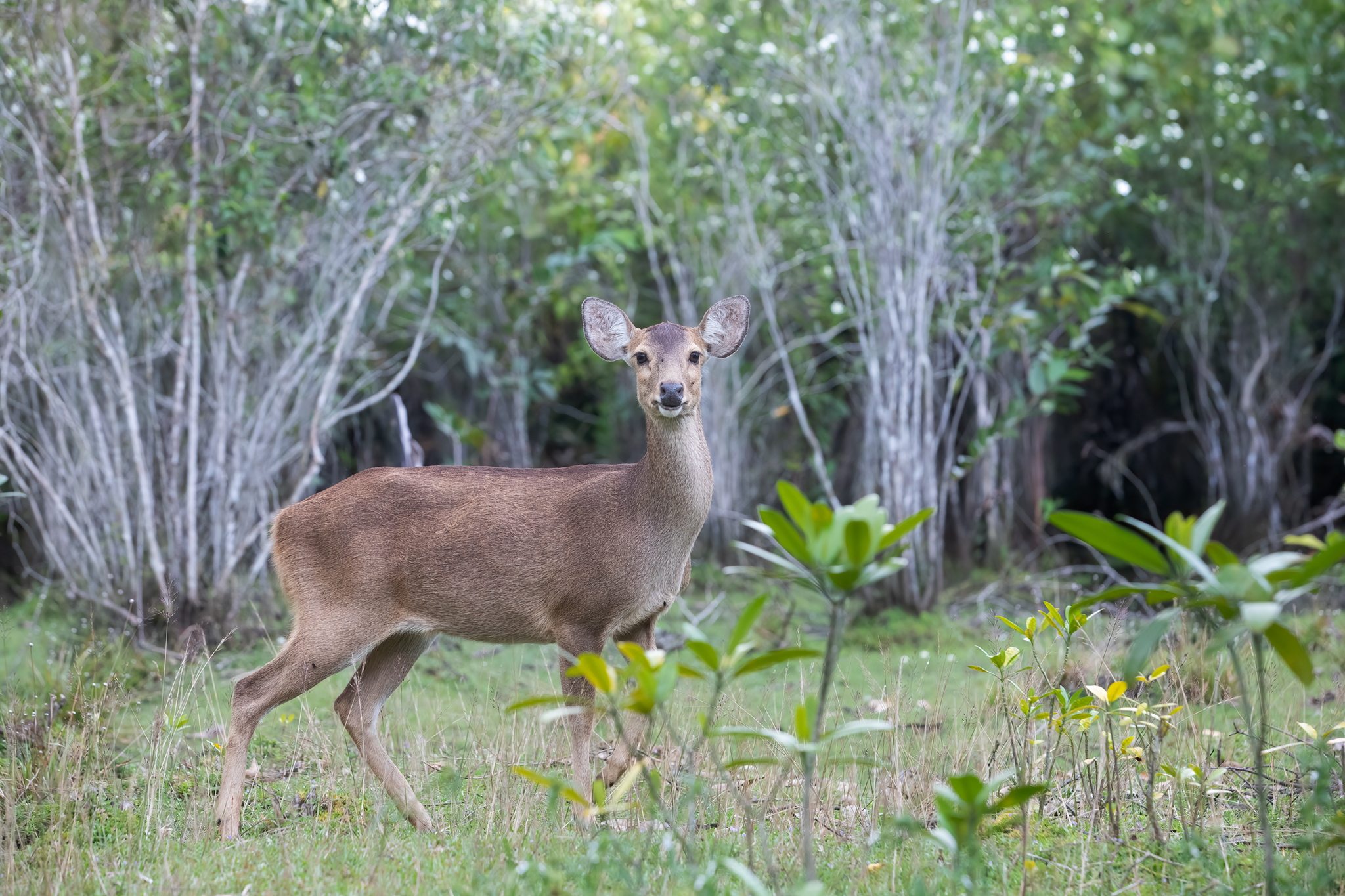
The Indian hog deer (Axis porcinus) is a medium-sized ungulate with a yellowish-brown coat and a darker underside. Exhibiting sexual dimorphism, males possess small three-pointed antlers, while females are smaller and lack antlers. These shy, solitary, and elusive deer are sometimes seen in pairs or small groups. While typically crepuscular, Sri Lankan populations have adapted nocturnal behaviours due to pressures such as poaching. They primarily feed on grasses, occasionally consuming leaves and crops, and inhabit wetlands, cinnamon plantations, and paddy fields.
The species is considered critically endangered in Sri Lanka due to habitat loss, population fragmentation, and reduced genetic diversity. Development projects, such as the southern highway, have confined populations to forest patches and agricultural lands, where they are often viewed as pests. Despite legal protections, hog deer remain threatened by poaching and human-wildlife conflict, leaving them at significant risk of extinction.